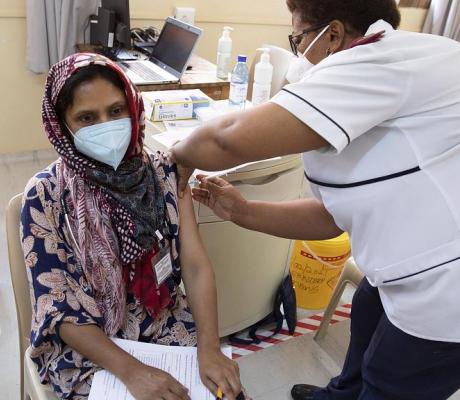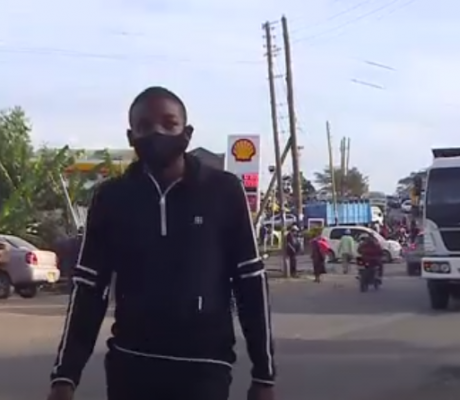Nearly six out of every 10 people who have caught Covid-19 in Uganda are from the capital, Kampala and its neighbouring Wakiso District, which, combined, constitute the country’s largest metropolis.
Our analysis of the official pandemic statistics for a year from March 21, 2020, when Uganda registered the index case, shows that central region, which comprises both Kampala and Wakiso, accounts for 66 per cent of all the 40,209 coronavirus cases registered in Uganda.
The data sourced from the Ministry of Health is current as February 20, 2021.
In absolute figures, central region has so far registered 26,471 cases, five times higher than eastern region, which has second highest infection rates at 5,032.
Western region follows closely with 4,759 cases while northern Uganda, which has the least population in the country, registered the least pandemic cases (3,943).
As of the period under review, Uganda lost 334 people, most of them in 40 to 60-year age group.
In a review of these statistics, President Museveni, in his address about the pandemic, declared a near victory over the disease and congratulated Ugandans for following government instructions or standard operating procedures (SOPs) that reversed the tide.
The official data shows that Kampala alone has had 19,116 cases, casting it as an outlier in a country where the districts with the next highest infections had 3,450 cases.
A total of 135 districts – the data for the cities are subsumed under their mother districts - have recorded 40,209 cases from March 21 to February 20, this year.
There is, however, a small discrepancy in the final tallies with figures posted on Ministry of Health social media handle adding to 40,213, four numbers higher than summation of the statistical entries in the ministry records.
High infection rates
Other districts with high infection rates, according to the official data, include Luweero, Amuru, Jinja, Gulu, Mukono, Mbarara, Kasese, Tororo and Masaka.
Meanwhile, the 10 districts with the least infections registered just 73 cases in the past year. They are Alebtong, Amolatar, Kibale, Maracha, Rwampara, Kalangala, Bukedea, Kapelebyong, Madi-Okollo and Luuka.
It is unclear if the low reported infections are a result of correspondingly low testing or a rural nature of the places where populations are dispersed.
Dr Charles Olaro, the director for curative services at Ministry of Health, said Kampala is the epicentre of the Covid-19 transmissions because it is the hub of business, which attracts huge populations, presenting a risk of infection with high population concentration.
The Uganda Bureau of Statistics (Ubos) in July last year projected the population in Wakiso and Kampala at 2.9 million and 1.7 million, respectively, the highest urban population concentrations in the country.
Col Henry Kyobe, himself a medical officer and the Covid-19 Incident commander, said the transmission is not homogeneous across the country because districts have varying socio-economic and political characteristics and cultural practices that may favour or stem Covid-19 transmission.
For example, in Kampala, Dr Kyobe says, there is a lot of congregating, many times with no or limited observation of SOPs. He added that some districts have more elaborate pandemic response than others.
Our count shows that some 91 districts, among them Kabale, Soroti, Hoima, Manafwa, have registered less than 100 cases each. Of these, eight had registered 10 coronavirus cases or below.
Dr Henry Kajumbula, the head of prevention and control on the Covid-19 Scientific Advisory Committee, said one of the reasons in the difference in cases in districts is due to the amount of human traffic in districts.
“Kampala is a business hub whereas Madi-Okollo [district, which had the second lowest infection rate] is not and majority of the population is indigenous while any of them who comes to Kampala can be at high risk. It all depends on the level of exposure,” Dr Olaro said.
What ministry says
According to the Ministry of Health, the community needs to observe all SOPs consistently. Though currently there is reduction in the number of cases for the months of January and February, Health minister Dr Ruth Aceng has warned that the respite might be temporary and a second wave of the pandemic could hit the country.
Our analysis of the Health ministry record shows infections began rising markedly in August, three months after partial lifting of lockdown from May but more notably in July.
There was a spike in infections in October, November and December amid different public activities such as campaigns for the January 14, 2021, increased movement and at the time most of the population had abandoned the Standard Operating Procedures (SOPs).
Also, the number of tests carried out in those months were high. In the three months, more than 232,834 tests were carried out.
In three months of October, November and December, Uganda registered 27,220 cases, accounting for more than half (67.6 per cent) of the total cases. This left most of the hospitals overwhelmed with patients in the three months, and introduction of home-based care for mild Covid cases.
Uganda registered the highest cases in December, of 14,471 cases. The rise in infections coincided with increased political activity for the 2021 General Election, culminating in the Electoral Commission banning mass rallies in at least 16 districts. It claimed such physical interaction and massing up of people would exacerbate the coronavirus situation.
An analysis of the official statistics at the time by this newspaper debunked the claims and found the decision was not supported by evidence.
In addition, predictions by scientists of a spike in Covid cases in the immediate post-election period have turned out false.
Ministry of Health officials says the pandemic is like flu and occurs in waves, and warned that it is too early for Uganda to celebrate and drop the preventive measures because a second wave could be worse.
Part of the reason for the dramatic rise in infections in August to October, according to Dr Olaro, was the lifting of lockdown measures when the country was already in stage four of the pandemic with wide community spread infections of untraceable origin.
“That’s what they call a wave… in October, November, and December when the numbers were overwhelming. The more numbers [of infections], the number you transmit. If you have five cases transmission is different than when you have like 100 cases. The latter will infect more people,” he said.
He added: “It’s a wave just like flu like. Now the rains have started and Covid is flu-like illness. There is a possibility that you can have an increase in cases, but you could also have another wave due to [new] variants,”
In an earlier interview, Dr Kyobe said with infectious diseases, transmission rises and falls over time and their focus was to reduce the magnitude since the transmission could not be completely stopped.
Trend
The least cases were observed in the months of March when the pandemic had just hit the country and April and the numbers dropped to similar levels last month.
The numbers of Covid infection began climbing in April 2020, primarily due to inter-state drivers who were testing positive. President Museveni ordered their statistics to be removed from that of the country since they originated from outside Uganda.
This led to a difference with the World Health Organisation, which was providing financial resources, other logistics and expertise to train and equip Ugandan professionals to better handle the Covid-19 outbreak, whose many unknowns left frontline workers terrified and fleeing.
According to our analysis of the Covid data, majority of the people who contracted the diseases were 20-59 years.
Affected age groups
The statistics suggest the risk of developing severe condition, or even dying, from a Covid-19 infection is evenly spread across different age groups
“Young people think they are immune; they do a lot of interaction,” Dr Olaro said.
Whereas young people have been the most infected, they have been the least to develop severe illnesses and as a result have survived the disease more than other older persons.
Almost twice as many men than women have succumbed to the disease, the data shows, meaning the more out-going men are at a higher risk.
According to Ministry of Health data, the person aged 80 and above is 24.5 times more likely to catch the disease and 7.3 times more likely to die than a 20-year-old.
Trend by region
In absolute figures, central region has so far registered 26,471 cases, five times higher than eastern region, which has second highest infection rates at 5,032.
Western region follows closely with 4,759 cases while northern Uganda, which has the least population in the country, registered the least pandemic cases (3,943).
Source: monitor.co.ug







